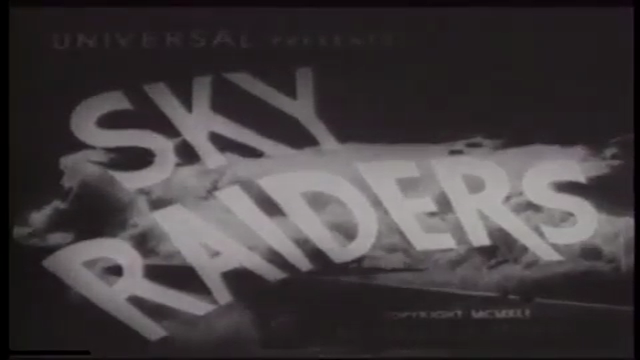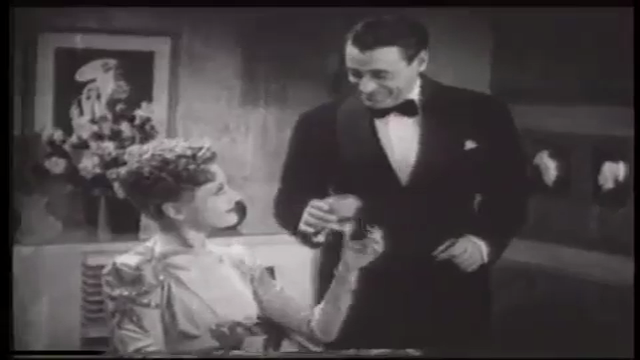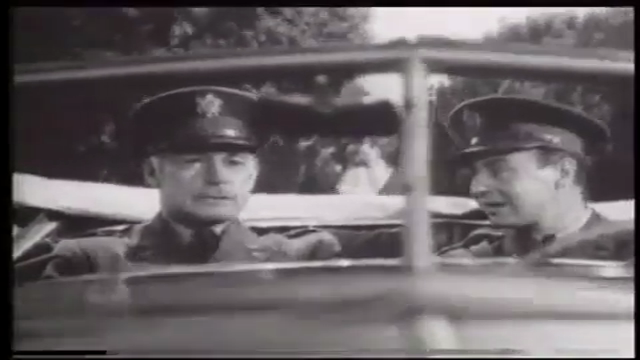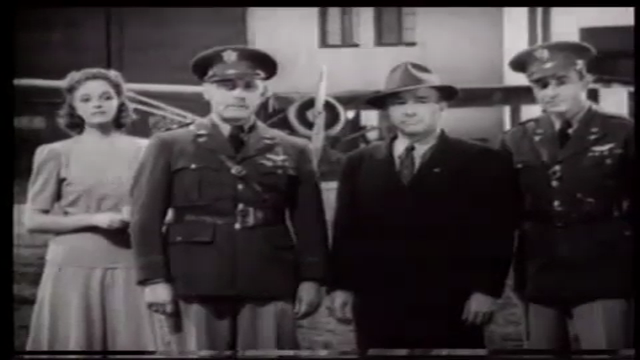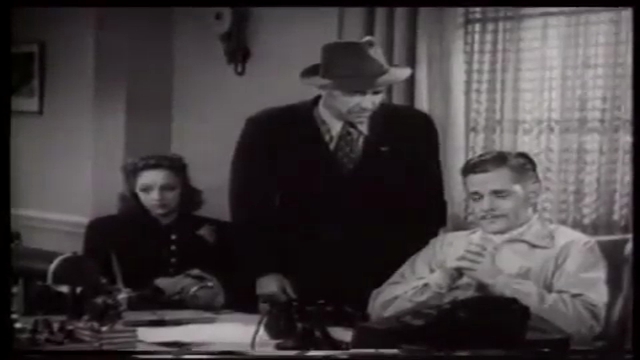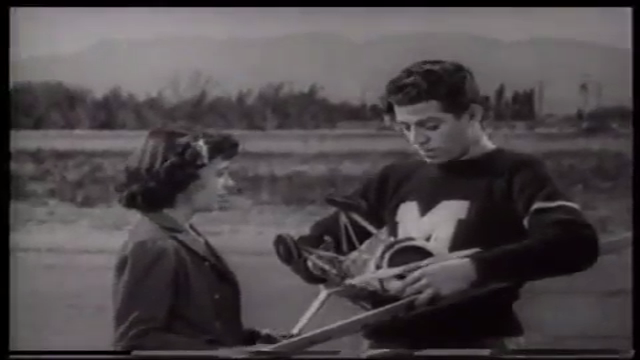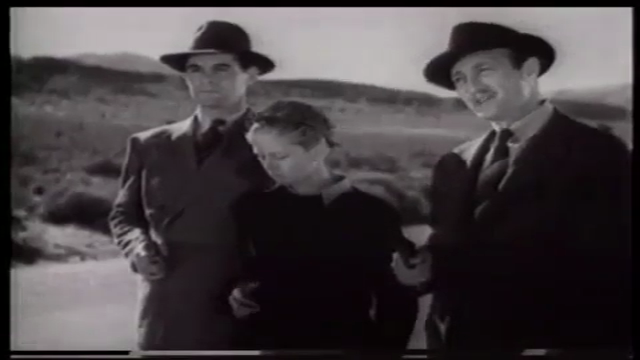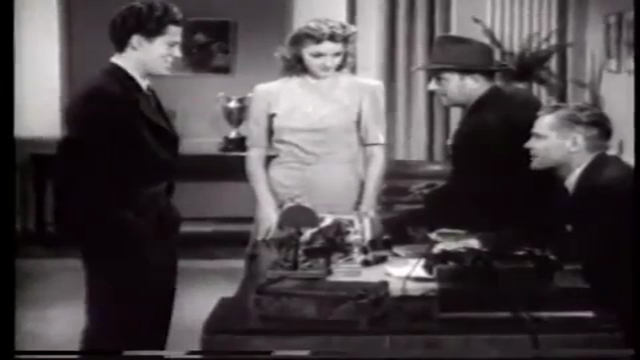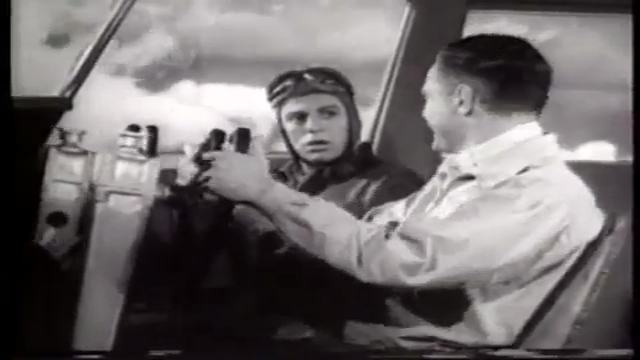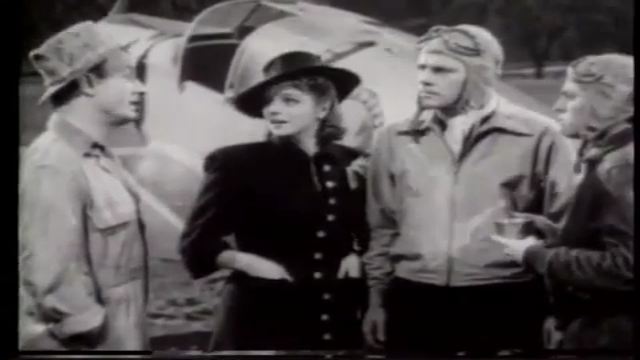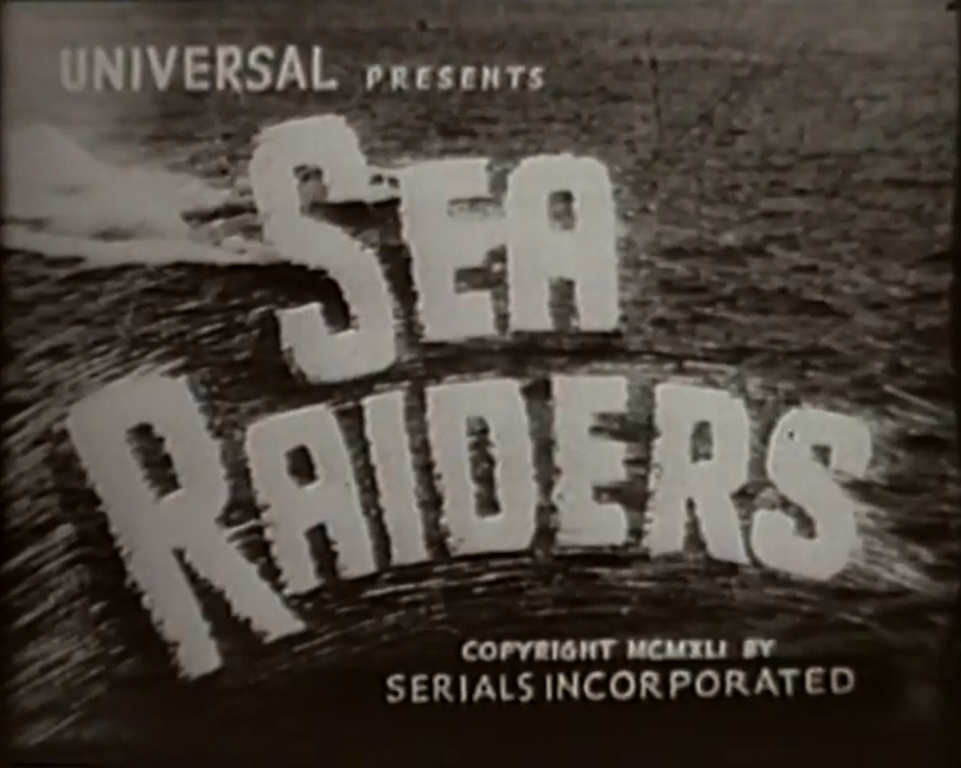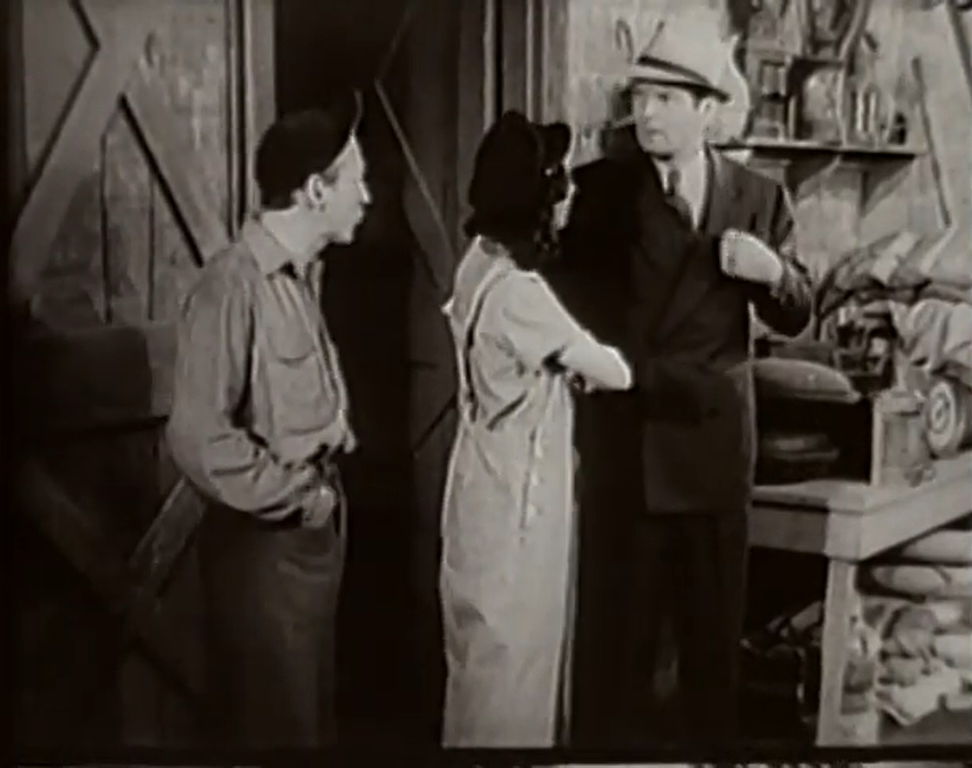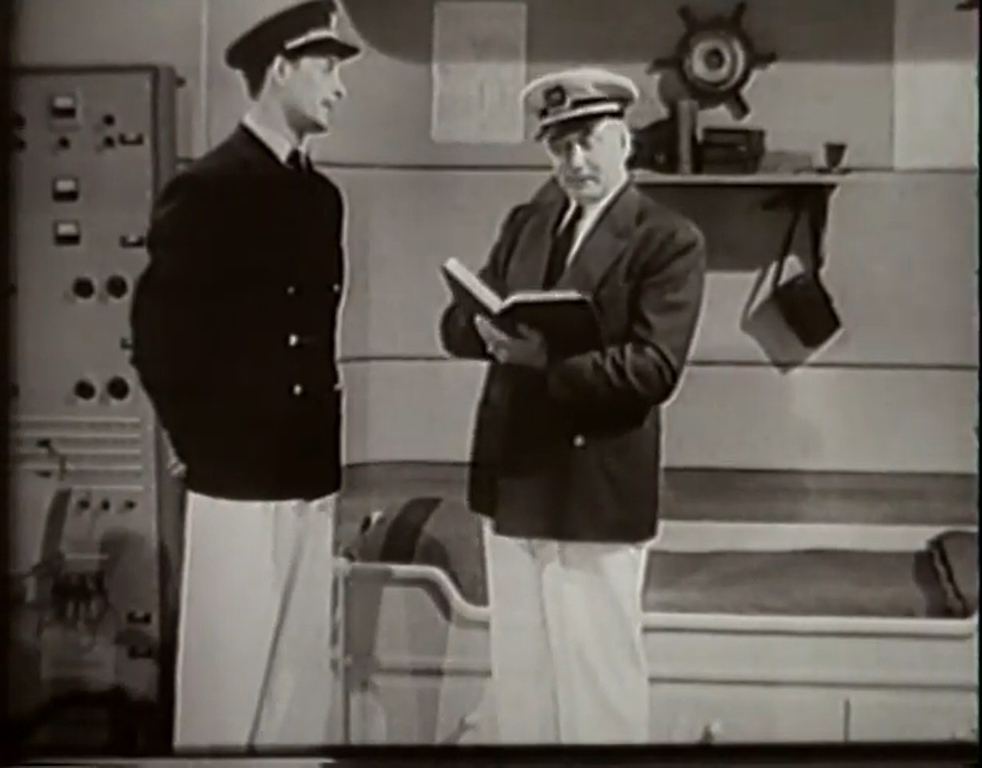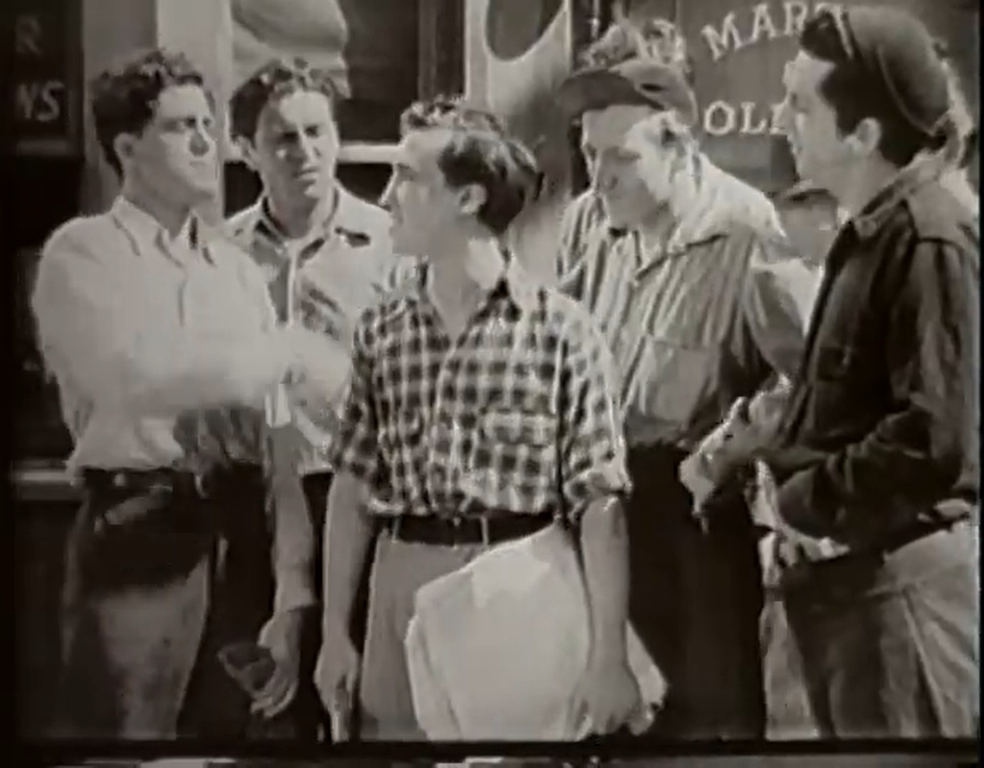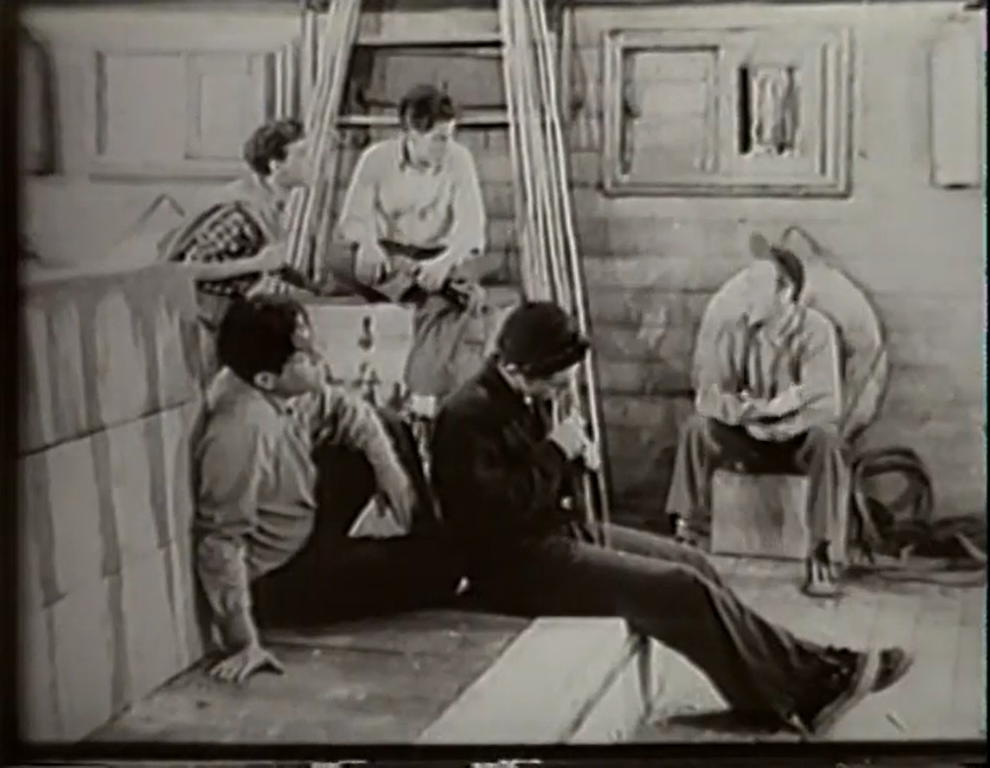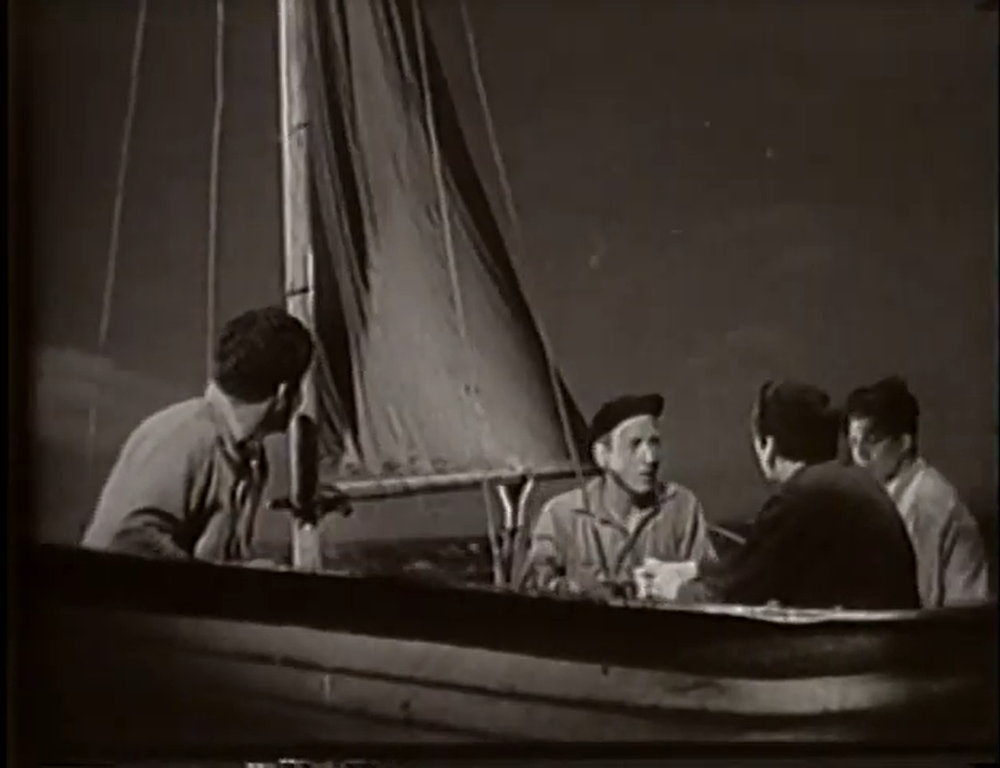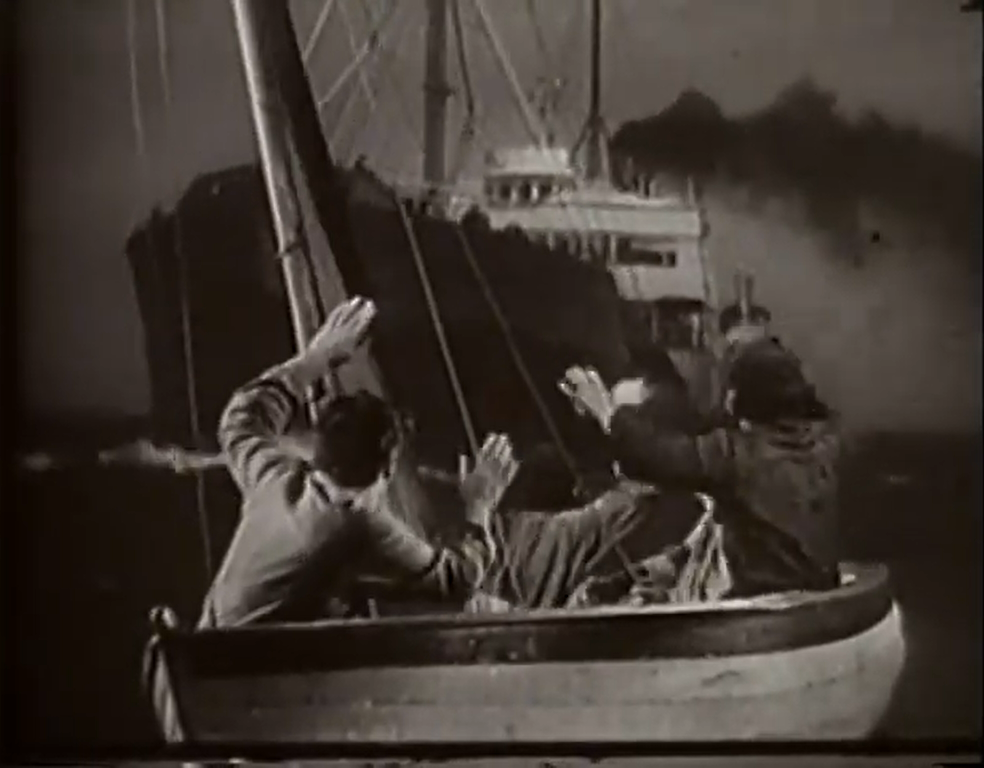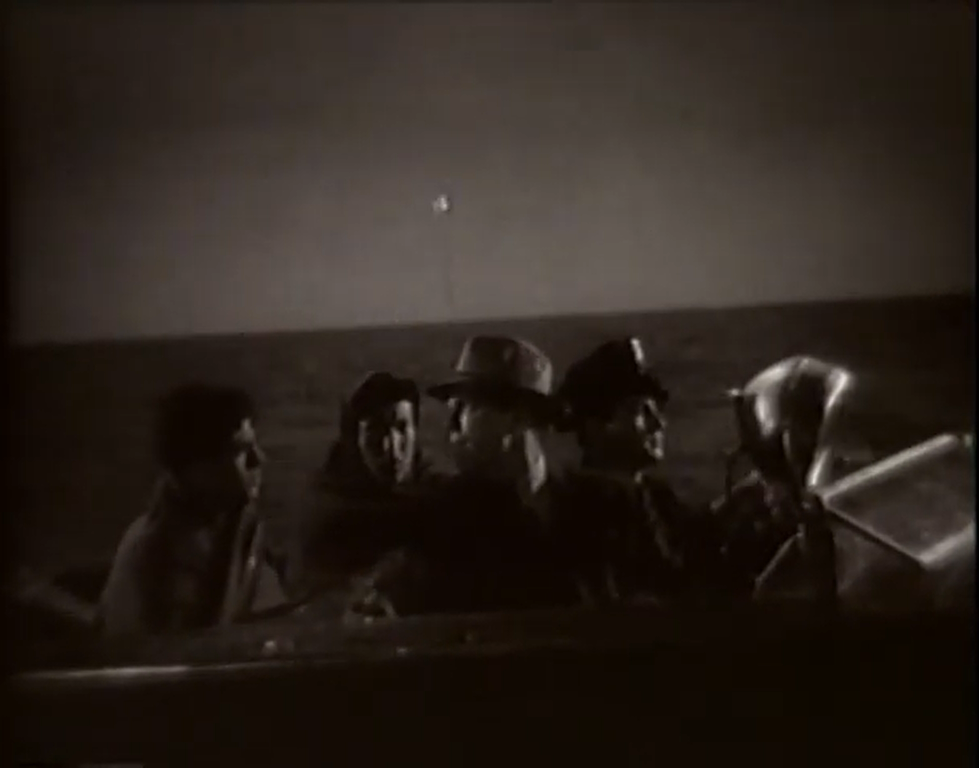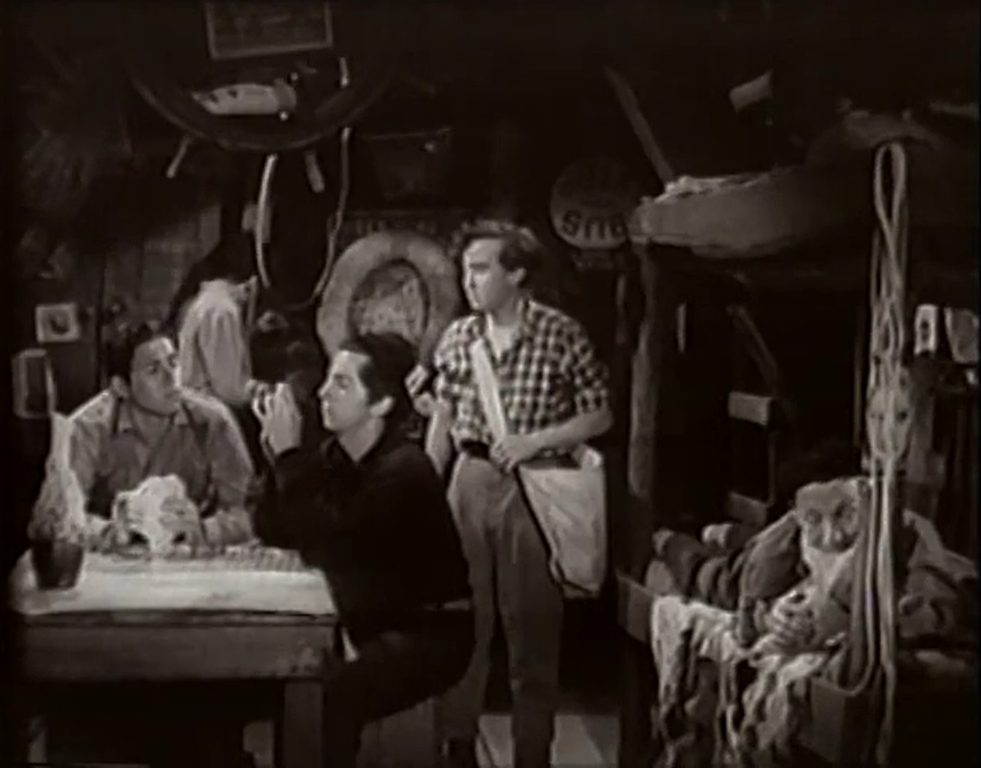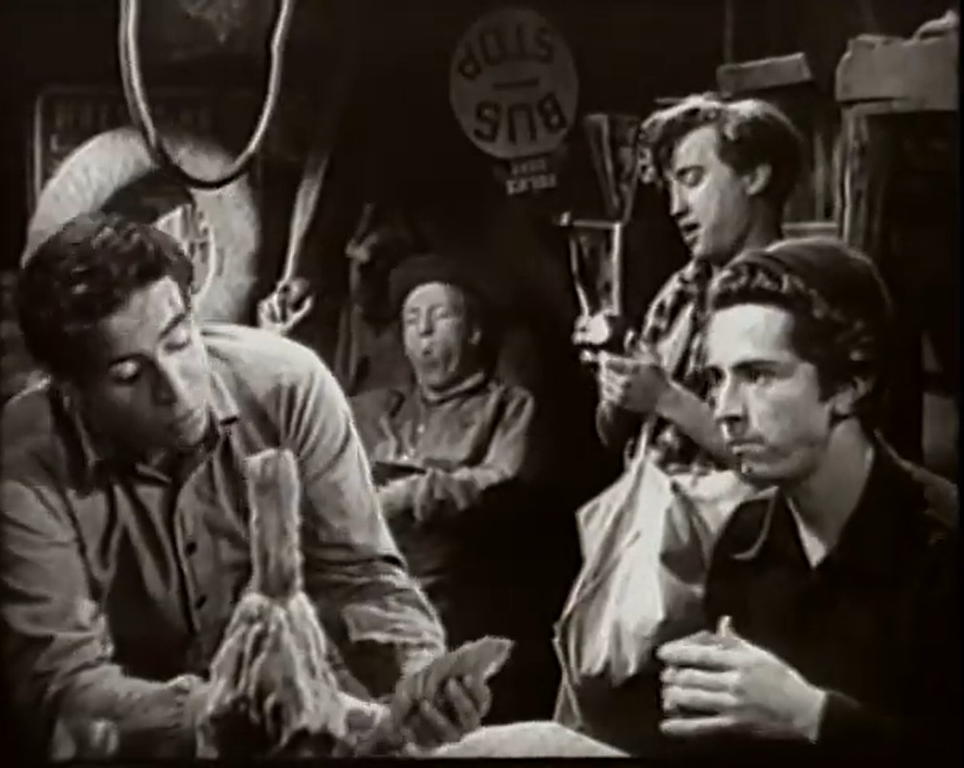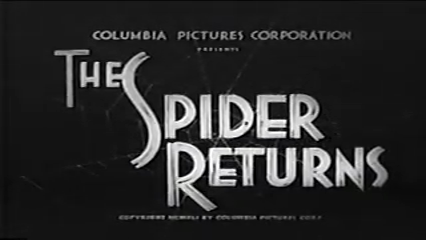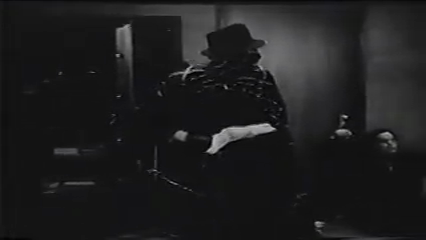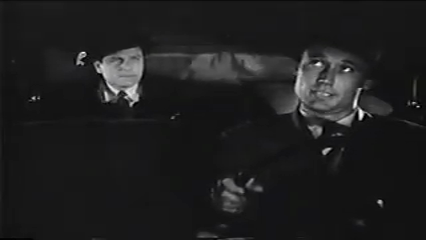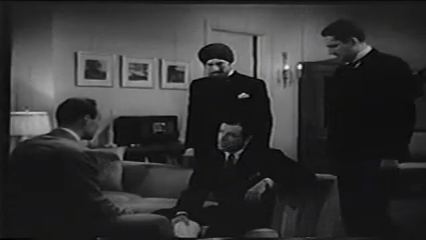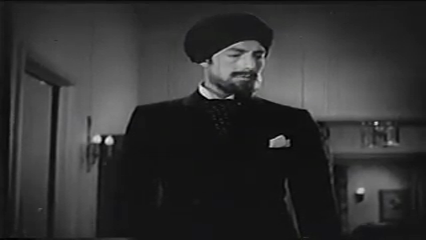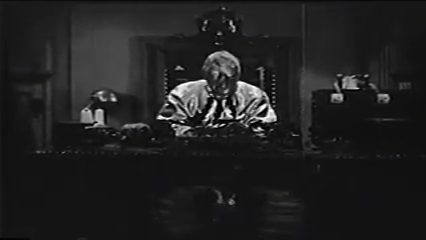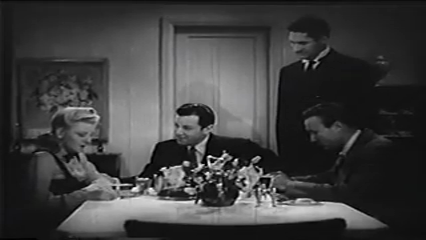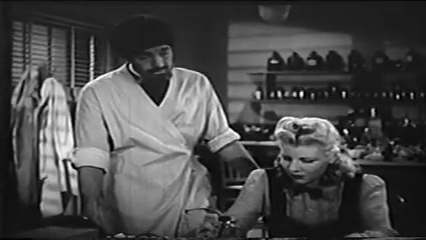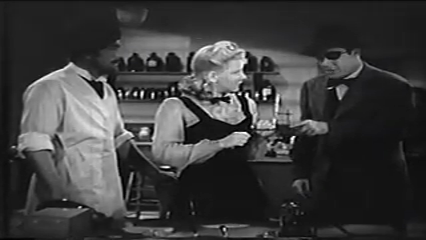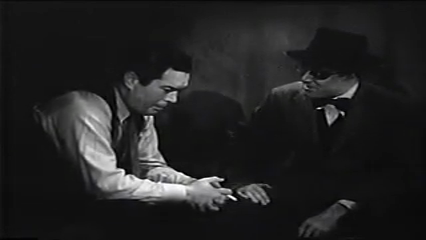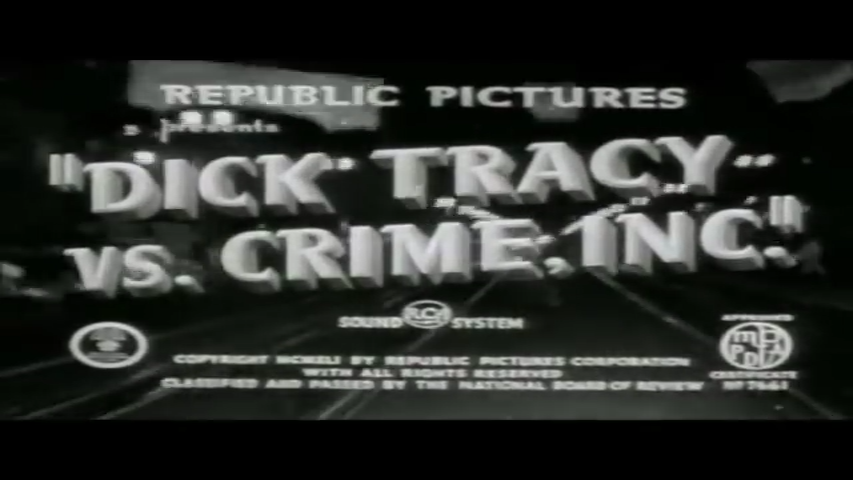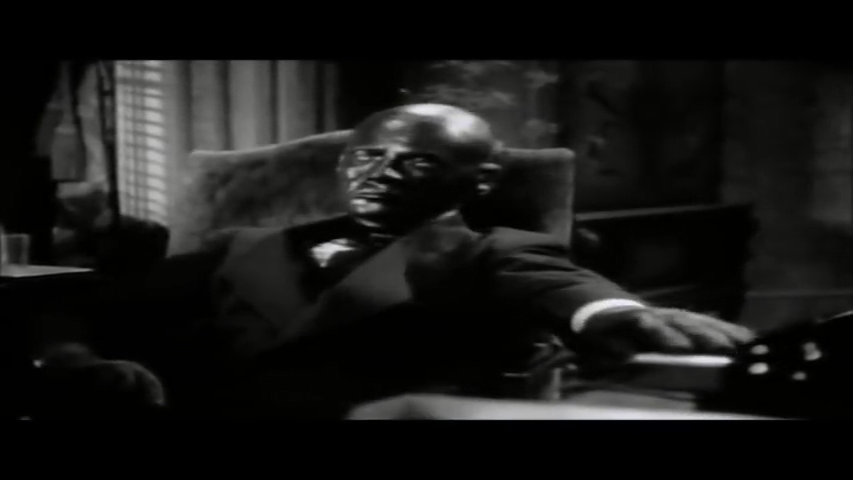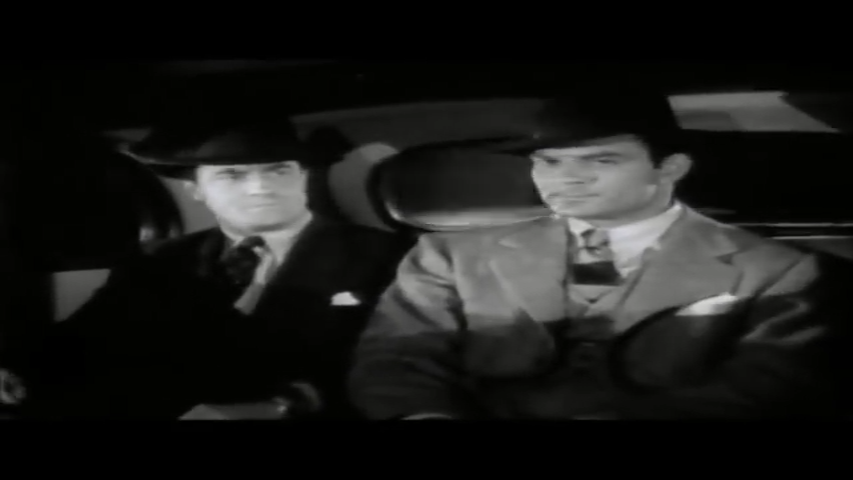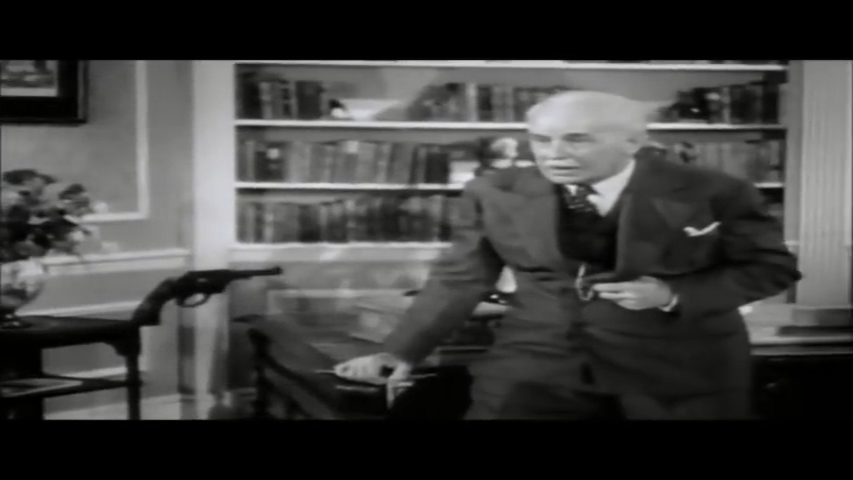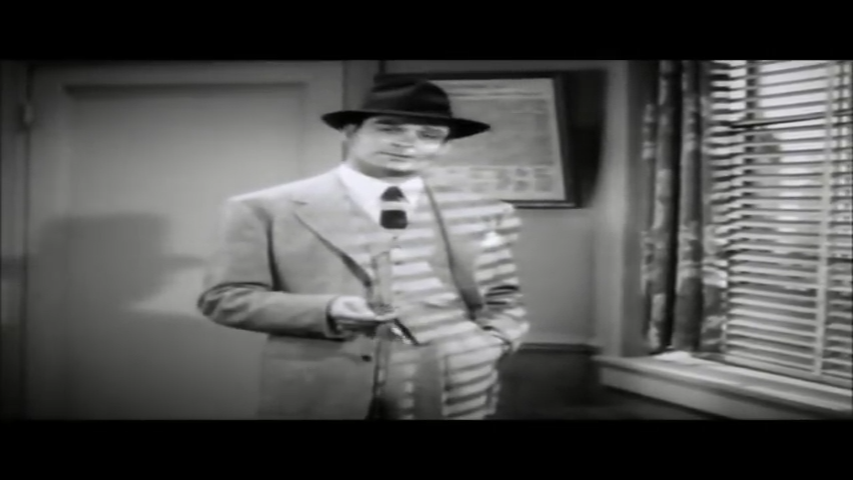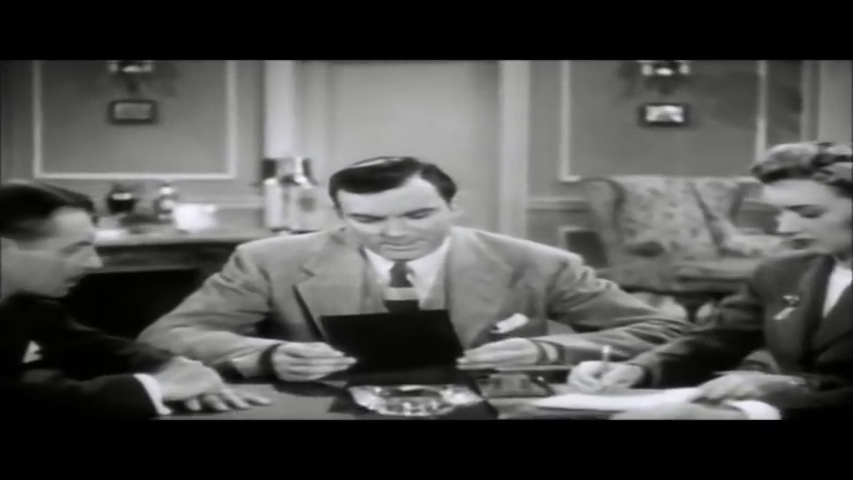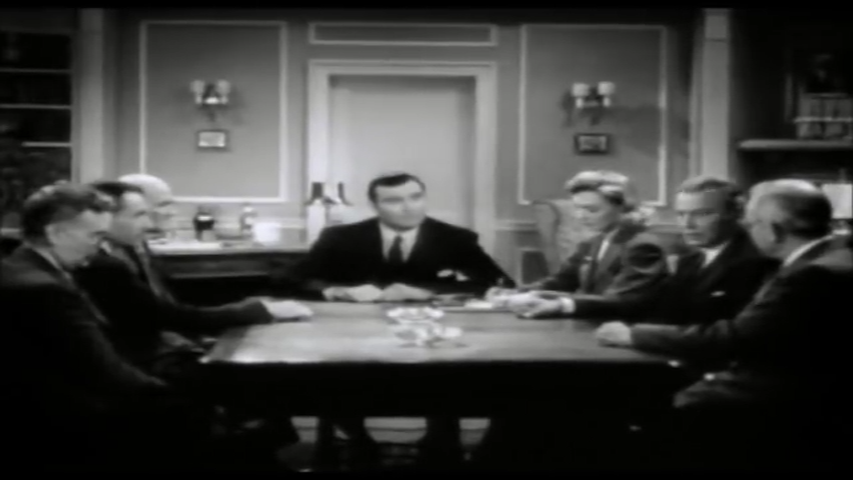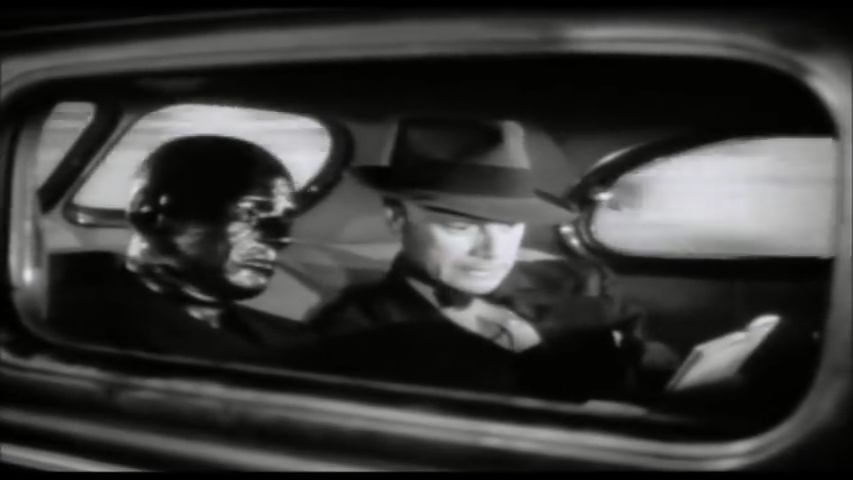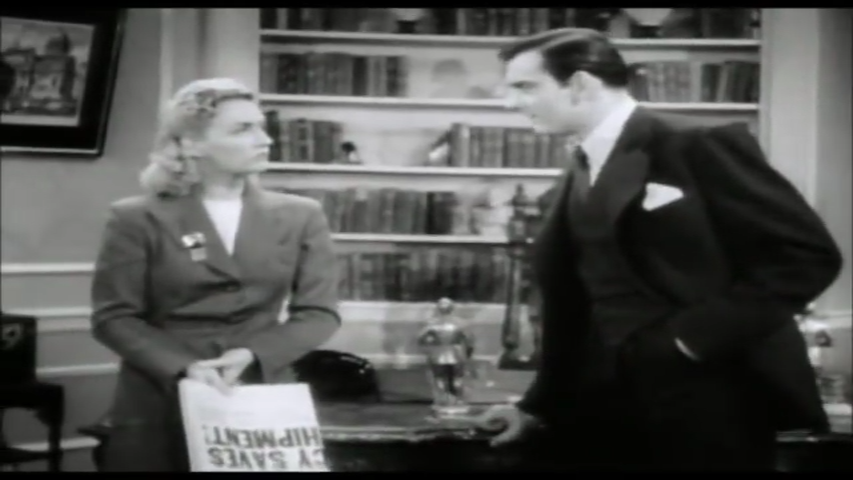-
#432 – Sky Raiders (1941)
Sky Raiders (1941)
Film review #432
Directors: Ford Beebe, Ray Taylor
SYNOPSIS: World War One pilot Bob Dayton operates the aircraft manufacturer Sky Raiders inc. along with his friend Lieutenant Ed Carey. When Dayton invents a new type of high-speed aircraft, a foreign spy named Felix Lynx, aided by Countess Irene, attempt to steal the aircraft in order to sell it to a foreign government.
THOUGHTS/ANALYSIS: Sky Raiders is a 1941 Universal film serial comprised of twelve chapters. As the title suggests, airplanes form the basis of the serial’s action. The story centres around former World War (one) pilot Bob Dayton, who owns the aircraft manufacturer “Sky Raiders Incorporated,” who has developed a new aircraft bombsight and a high-speed aircraft that he intends to sell to the American government, but spy Felix Lynx is hired by Countess Irene to steal the plane so she can sell it to a foreign government. The plot should be extremely familiar to serial goers, as it follows the usual tropes and plot elements they all have, from vehicle chases, fistfights, cliffhangers, and various plans to foil. The theme of aviation is one that is used in a fair few serials, and there’s definitely enough dogfights and planes to justify the theme. Other than that, there’s not much remarkable in terms of the story, as the characters just seem to wander into dangers and unremarkably find themselves out of them, while the villains haphazardly try to get what they want. There’s some development with the characters and their personalities do play into the story a little, but not too much.
Bob Dayton as the lead protagonist is a little different from the usual serial leads: he’s not the young, square-jawed and charming type that you usually see, but rather a World War (one) veteran, middle-aged, and prone to quirky behaviour and occasionally a bad temper. he certainly seems a lot more human than the usual heroic types. He is described as being very lucky at getting out of dangerous situations, and that certainly plays out across the chapters as he survives storms, plane crashes and the like. It is perhaps a cheap way of resolving conflict by simply hand-waving it away as simple good luck, but it’s more than other serials do when their protagonists survive similar certain-death experiences. Mary Blake as the token female character plays the typical role of secretary (the only jobs women have in these serials is secretary or reporter). Her romantic interest in Dayton provides a bit of character development as she tries to get his interest. Billy Halop plays Timothy Bryant, a young airplane enthusiast who gets hired by Dayton to work at Sky Raiders. His character obviously plays the part of a younger character who the viewers of a similar age can relate to. He usually plays a street-tough kid who rebels against any form of authority as part of the “Dead End Kids” group of young actors (in serials such as Sea Raiders), but here his character is certainly more ‘normal’ and cooperative. Ed Carey as Dayton’s sidekick and occasional comic relief is unremarkable, and Hinchfield plays the role of the Sky Raiders finance officer, who is secretly working for the villains, and plays a very typical role. The villains aren’t nearly as fleshed out, as Felix Lynx operates as a a typical henchman, and the Countess Irene, who has hired Lynx, makes few appearances and does even less. They often have very little to do, as Dayton’s good luck manages to get him out of most situations.
The plane sequences are decently executed, and there’s plenty of real planes that are shown on film. The aerial sequences are less impressive, as they are clearly models being shaken around in front of an aerial photograph. One thing that always bugs me is when planes are flying in the air and when the pilots open the cockpits there is never any wind. It’s not too important in the long run, but it’s one of those nitpicks I always have. The rest of effects are fairly standard and not worth writing about. Overall, Sky Raiders does some good work on it’s character development and usage of planes, but falls behind with its lack of villain motivation and an overall plot. The two more or less balance out, making a fairly average serial.
-
#415 – Sea Raiders (1941)
Sea Raiders (1941)
Film review #415
Directors: Ford Beebe, John Rawlins
SYNOPSIS: A gang of kids living by the harbour get wrapped up in a nefarious plot by a foreign agent to steal a new “torpedo boat” that is to be sold to the American government. The boat has been invented by Adam, who is Billy’s older, who is also the leader of the gang. When the plans for the boat are stolen, a local G-man named Brack Warren believes the kids are to blame, and tries to hunt them down. Billy decides that the only way to clear their name is to try and find who stole the plans and get them back before they are captured and Brack sends the kids to the desert…
THOUGHTS/ANALYSIS: Sea Raiders is a 1941 movie serial and the second universal serial featuring the group(s) of young actors known as the “Dead End Kids” and the “Little Tough Guys.” Junior G-men, the first serial was released the previous year. The story centres – as the title suggests – around the sea, where an unknown assailant termed the “Sea Raider” has been destroying ships carrying wartime supplies to America’s allies in Europe. Billy and his gang of street kids are causing trouble and trying to avoid getting caught by local officer Brack Warren, who wants to ship them off to the desert. Billy’s brother Tom has been developing a new torpedo boat that be sold to the government and shipped to its allies, but little does he know his friend Captain Carlton is secretly working with a foreign agent to steal the boat for his own country. When Tom’s workshop is broken into and his blueprints are stolen, Warren suspects Billy’s gang is behind the theft, and they decide to prove their innocence by tracking down the real thieves. The story is fairly similar to the usual serial format, but like its predecessor, deviates somewhat by having the lead characters not be a square-jawed, cowboy-esque white male, but instead this gang of rogue, slang-talking kids who constantly cause trouble. and rebel against authority. The plot flows nicely, and although it falls into some typical tropes of the format, it switches up the locations and perils enough to keep things interesting.
The kid characters, as mentioned, do eschew the typical lead roles, but their characters are almost identical to the ones they played in Junior G-Men. The young actors only play this very specific role though, but it is confusing that this isn’t a direct sequel, and even more so that the lead kid Billy is again playing a character named Billy (whose real name is also Billy). A lot of what I said about the characters from my review of the previous film featuring them still stands: the characters initially come across as rather unlikable, in that they are constantly causing trouble and stealing from people. It’s a bit more toned down in this film though, and their relatives dismiss their antics as mostly harmless. A lot of their antics are also directed at Brack Warren, a local police officer, who provides more of a comic relief role in his inability to apprehend the kids and his general incompetence, so the kid’s actions don’t seem so bad. Other than the main cast, the supporting cast are more in line with a typical serial, with a villain that is pretending to be the heroes friends, backed by a foreign agent (although the name of his country is not mentioned, he is obviously German). The theme of the serial around bewaring foreign spies and standing up for your country are typical of wartime serials, and like its predecessor, this one is perhaps aimed at younger viewers who like the kids in the serial are troublemakers, but can still support their country.
There aren’t too may serials with a focus on the sea, so that makes the serial stand out a bit more (The only other one I have seen is S.O.S. Coast Guard). This setting brings with it a lot of chases on the sea and even fights with sharks and an octopus. The camerawork is fairly decent, and the shots at sea are well done and convincing for the time. On the negative side, I noticed that the twelve chapters are a little shorter than usual. Given that the beginning of the chapter is a text-scrolling recap of the previous chapter, then there is playing the end of the previous chapter for the cliffhanger and it’s resolution, you are basically getting less than fifteen minutes per chapter, which if you’re going to the theatre every week seems like a bit of effort for little in return. On the other hand though, this means that the chapters are quick and fast-paced, so you’re not bored with scenes of pointless dialogue of characters explaining the plan they’re about to execute. Like it’s predecessor, Sea Raiders offers something a little different in the format: not too much, but enough. The story is familiar, but well-paced, and the action sequences are well done. The lead kids are a little erratic and difficult to root for when they act in their spiteful and rough manner, but they settle into the role of heroes well enough when confronting the real villains. Similar to Junior G-men, it’s worth a watch if you’re a fan of the format (although it doesn’t really work as a format nowadays), and would have been entertaining back when it was released too, I imagine.
-
#412 – The Spider Returns (1941)
The Spider Returns (1941)
Film review #412
Director: James W. Horne
SYNOPSIS: A masked criminal, known only as The Gargoyle, and backed by malicious foreign powers, aims to sabotage national defence production by targeting the owners of key industries. Criminologist Richard Wentworth must once again don the secret disguise of “The Spider,” a masked vigilante, in order to move outside of the rules and regulations of law enforcement, and along with his friends stop The Gargoyle before he can do irreparable damage to the country…
THOUGHTS/ANALYSIS: The Spider Returns is a 1941 movie serial and the sequel to the 1938 serial The Spider’s Web, based on the magazine comics of “The Spider.” The serial follows a similar setup to the first one, with criminologist Richard Wentworth secretly disguises himself as the masked vigilante The Spider in order to stop another masked individual known only as The Gargoyle, whose criminal gang is working to sabotage industries related to national defence. Sabotage really is the key word for the plot of this serial: it was released in 1941 in the context of the second world war and a heavy focus on the U.S. gearing up for getting fully involved. The concept of sabotage runs through a lot of wartime serials, with suspicion being placed on “the enemy within,” who would attack not from outside, but from the inside through the acts of sabotage. There’s a fair amount of wartime messaging throughout the serial, explaining how “our great country” is under threat from “foreign powers,” who will target key industries. No specific country names are mentioned, but you can figure it out. With this theme, the serial has a bit more of a darker tone to the story, but never anything overly scary, as these serials are generally aimed at younger audiences and bringing in families. To seemingly offset the darker tone, there’s some more silly moments, usually between The Gargoyle and his inventor assistant, as The Gargoyle berates him for his inventions going wrong. They do however make The Gargoyle feel a bit less threatening, but again that may have been the purpose to make the serial a bit more family-friendly, and the villain less scary, while still getting the wartime message through. Overall though, it does present a bit of a mismatch that makes the comedy seem on the whole out of place.
All of the protagonists from the first serial make a return here, although only two of the original actors reprise their roles: Warren Hull as Richard Wentworth AKA The Spider, and Kenne Duncan as Wentworth’s chauffeur Ram Singh. Dave O’Brien, who was Hull’s stunt double in the first serial, now takes over as Jackson, Wentworth’s assistant. The characters more or less have the same roles as they did before, but perhaps have less to do than they did in the first serial, which balanced out the use of the characters a lot more than most serials. Hull performs the triple role of Wentworth, The Spider, and Wentworth’s disguise Blinky McQuaid, a petty criminal who Wentworth disguises himself as in order to go undercover and get information from The Gargoyle’s henchman, and his multi-faceted role is very much the centrepiece of the story. The different roles give enough variety to the situations, and causes Wentworth to consider his actions in terms of how each character is perceived, such as police commissioner Kirk’s attempts to catch The Spider, and who always has suspicions that Wentworth is the masked vigilante. As mentioned, the villains are a bit less threatening in their hapless endeavours, as The Gargoyle gets into some comedic banter with his inventor assistant, and using his X-Ray eye machine, spies on his underlings to see they are having a party instead of doing his evil work.
While The Spider’s Web was a wildly popular serial that probably (in part) sparked the trend of masked superhero serials, The Spider Returns isn’t quite as good as its predecessor, but is still a decent example of the format, with enough variety through Hull’s triple performance, the sci-fi inventions used by the villain, and the focus on sabotage and its wartime message has some impact. The trend of masked superheroes faded away after the war was over, instead making the leads more military-like and ordinary to reflect the victorious soldiers of the war. However I think the escapades of The Spider shouldn’t be forgotten, as they were very influential in the production of the serial format in its time.
-
#386 – Dick Tracy vs. Crime, inc.
Dick Tracy vs. Crime, Inc. (1941)
Film review #386
Directors: William Witney, John English
SYNOPSIS: Dick Tracy is assigned to deal with a criminal known only as “The Ghost”, who is able to turn himself invisible thanks to a special invention. The Ghost is after the members of a city crime council, who helped convict his brother Rackets Regan and sentenced him to death. It is a race against time for Tracy to stop The Ghost before he succeeds in killing all the remaining members of the council…
THOUGHTS/ANALYSIS: Dick Tracy vs. Crime, Inc. is a 1941 movie serial and the fourth Dick Tracy serial to be released in as many years. This time, Dick Tracy is on the trail of a master criminal who calls himself “The Ghost,” who also has the power to turn himself invisible thanks to a special machine. The Ghost is seeking to take revenge on the city crime council, who helped convict his brother Rackets Regan to death, and in the opening chapter, we see him take out one of the council members, and his daughter June Chandler, teams up with Tracy in order to stop The Ghost. The story combines two typical tropes of the movie serial format: one, an invisibility device which many serials have done, and two, the identity of the main villain is hidden behind a mask until they are exposed in the final chapter. As always, there’s nothing too unique about the way the serial uses these plot points, but again this Dick Tracy serial manages to use them better than its contemporaries, and create a well balanced serial with plenty of action and intrigue. The added sci-fi element makes it feel a little different from the previous Tracy serials too, which is what is needed in this fourth instalment. There is a fair amount of re-using stock footage from the previous serials for the cliffhangers at the end of each chapter, but honestly it doesn’t feel like that much of a problem, as you know they will always end up with Dick Tracy escaping just in time.
As the serial progresses, there is a range of villainous schemes that Tracy and his friends have to foil, as well as the mystery of The Ghost’s identity with adds an element of mystery to everything. There’s always plenty going on, and the dialogue never gets too dragged down in exposition. For this serial, Dick Tracy is the only returning character, although Billy Carr and June Chandler play the roles of Steve Lockwood, a fellow agent, and Gwen Andrews, Tracy’s secretary in an almost identical capacity. Ralph Byrd as Dick Tracy has always been the star of the serials, and as long as he returns, the rest of the cast are pretty inconsequential. The identity of The Ghost is kept secret throughout the serial, with suspicion falling upon various members of the council at different points, then shifted away as they are killed. Everything is tightly-knit together, and even though it does cut down the cast and re-use some footage, I think it may be the best serial out of them all: it perfects what it is trying to do, and even though it uses plot devices that have been seen in the serial format before, it does them a lot better. If you were going to only see one Dick Tracy serial, I would probably say to choose this one, as it exemplifies not only the best of Dick Tracy, but some of the best examples of the serial format.
